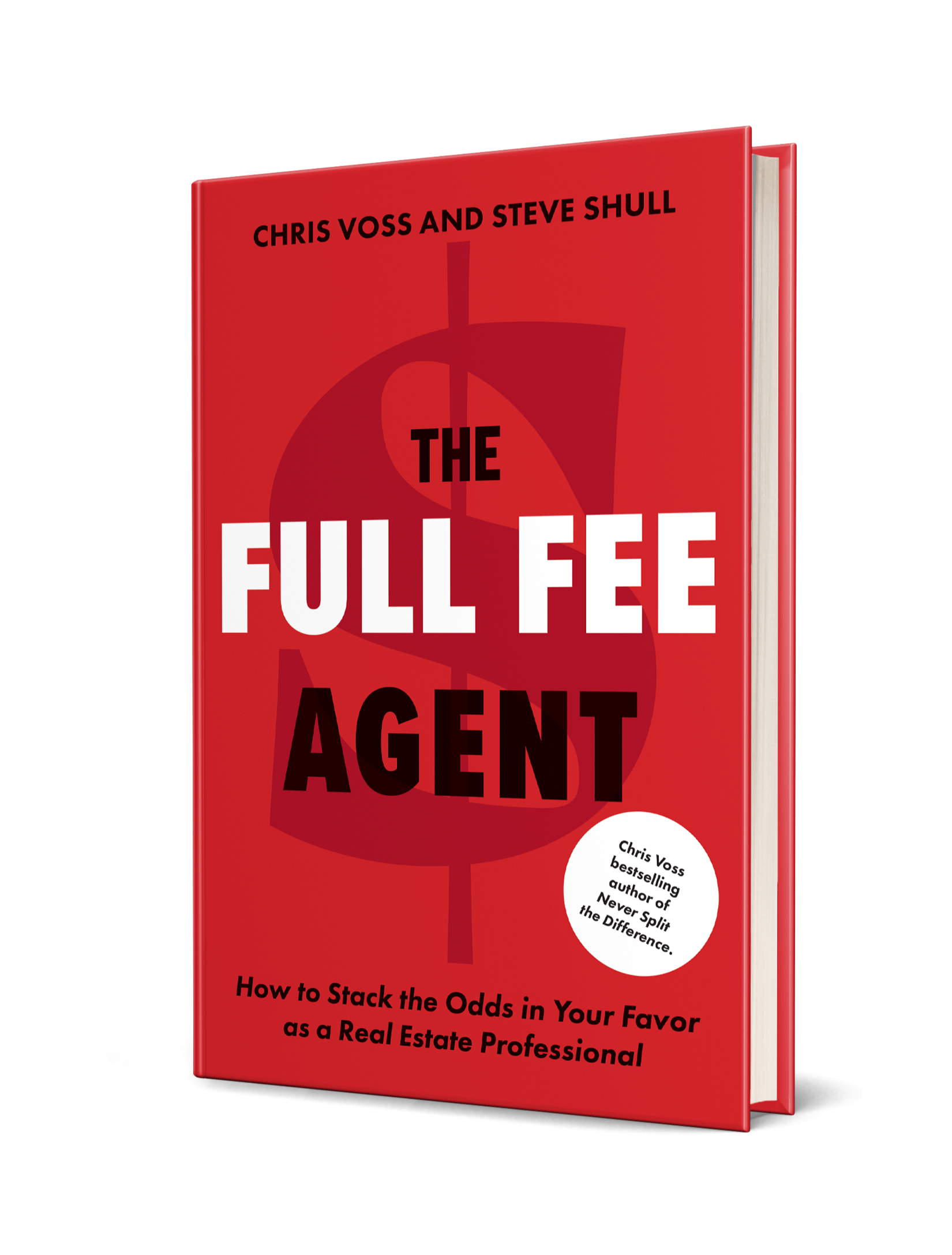Presenting Offers: How to Win the Listing Agent to Your Side
Jul 26, 2024
by Laurie Gilmore
Over the past few months, we’ve talked a LOT about using Tactical Empathy with your clients…
But what about other real estate agents?
The first place agents seem to let go of the practice of empathy—and the use of Tactical Empathy—is when we’re dealing with our colleagues.
Even as we progress in our use of Tactical Empathy with our clients, once we enter the arena of offer negotiations with our colleagues, old habits take over. We often default to more aggressive tactics under a misguided belief that that kind of approach is necessary to fiercely represent our clients’ best interests.
This is a fatal mistake.
When you’re presenting an offer, the agent on the other side can be a deal maker with you and your client…or they can be a deal killer for you and your client.
If you want them to be a deal maker, you NEED empathy and Tactical Empathy.
Remember, negotiations are not limited to going back and forth on numbers and terms.
A negotiation is any conversation where “I want” or “I need” is in someone’s head.
When you’re presenting an offer, “I want” is in your head. “I want this agent to see that this offer is a good one.” “I need” is in the other agent’s head. “I need a strong offer to present to my seller.”
It’s important that you cross to the other side of the street, and figure out what the other agent is facing.
Here’s a two-step approach to help you do that.
1️⃣ Find out about their client’s expectations.
Once you and your buyer have discussed making an offer, perhaps while they are still considering their final terms, check in with the seller’s agent and find out as much as you can about their thinking as well as their seller’s expectations.
(This may sound obvious, but is it, truly, a part of your standard process?)
First, reach out to the agent and check to see if it’s a bad time to speak.
(Remember we’re always phrasing our questions to allow our counterpart to give us a “no,” i.e. “Have I caught you at a bad time?”)
Then get them talking. This may sound something like:
“Would you mind sharing an update on X property?”
“Your seller probably has a very specific vision in terms of the perfect deal. Would you be opposed to walking me through that vision?”
In the course of this conversation, you might learn that there is already an offer or multiple offers in play, or the status is somehow complex or unclear.
In that case, you can probe further with an approach like:
“This is probably impossible for you. Would you be completely opposed to being brutally honest with me about what’s going on?”
(Yes, I’ve tested this, and it yielded much more detailed information than I would have otherwise received.)
We’re all working in different markets, some of which have standards for offer presentation, and some which leave the offer process completely up to the agents.
If you’re in the latter category, check in with the agent regarding their expectations with something like:
“You probably have a specific way in which you like an offer to be presented. Would you mind sharing your preferences with me?”
2️⃣ Probe again before you present the offer.
Once you have the offer ready to present, before you send it in an email, reach out via phone again, and again check to see if it’s a bad time to speak. Then proceed with something like:
“My buyer has authorized me to present an offer on X property.
You might get a: “That’s great. What have you got?”
Resist the urge to jump right in. Invite their thoughts first:
“Before I deliver the offer do you have any updates? Would you mind sharing anything you think is important for us to discuss up front?”
Listen up. The agent may share more information at this moment than they would after hearing your client’s terms. The status may have changed. They may say something that impacts how you present the offer. They may even share something which leads you to go back to your buyer before presenting the terms.
The agent may have nothing to say, but you still get the credit for offering them the floor. They’ll then be more clear-headed and receptive to what you have to say.
3️⃣ Present the offer with Tactical Empathy.
When it’s your turn to speak, start with something like:
“Would it be a bad idea for me to run through the terms of this offer with you before sending it over?”
Set up the terms with an introduction that welcomes their disagreement, even if you think you’re delivering the perfect offer:
“As I go through the offer terms, if at any point you hear something that sounds like a problem, would you mind stopping me and letting me know?”
You’ll probably get a: “No problem”.
Then deliver your client’s terms.
If you know going in that the offer you’re delivering may not be received well, tackle that head-on with no sugar-coating and no spin.
Maybe it’s far below the asking price, it comes with challenging contingencies, or has some other “hair” on it. Tee up the challenging issue with something like:
“You are not going to like this offer. It is far below the list price.”
Or
“Your seller is going to hate this. The buyers are asking for a delayed closing.”
Deliver that message in your Analyst tone: LOW and SLOW. Then, STOP talking and let the agent respond before you continue.
Listen closely, and make the agent feel understood by labeling and mirroring their response.
If the agent is expressing discomfort, frustration or anger, acknowledge that with something like:
“It sounds like presenting this offer is going to put you in a terrible position with your seller.”
“What do you need from me in order to make that conversation go better?”
If you arrive at a place where the agent is simply saying, “There’s no way my seller is going to agree to this,” it’s time to wrap it up.
That may sound something like:
“It seems like this is really going to be a deal-breaker.
If, when you present the offer, you find that this is not acceptable for your seller, and they want to counter, of course I’ll take that back to my clients and we’ll see what they will or won’t do.”
Before you end the conversation, establish a communication plan going forward:
“If I haven’t heard from you by X date, what should my next move be?”
As always, with Tactical Empathy, we cannot hand you a neat script to follow.
What we CAN give you is a framework to keep you on track, suggested language to give you a leg up, and tools to keep you moving forward productively.
The REAL work is in listening deeply and responding, in the moment, to what your colleague is expressing.
A couple other things to keep in mind that will help you in these conversations…
Your voice will induce an emotional reaction in your counterpart.
You are 6X more likely to make a deal with someone you like. So, like them—at least in your head and in the moment.
Think “I like you and we will get through this together,” and your voice will follow.
Remember to approach the conversation from a place of curiosity.
If, on the other side, emotions are running high, stay vigilant and do not let yourself be triggered. If there is strong push back against your buyer’s terms, don’t construe it as a personal attack. Label and mirror the objections to defuse the negative emotions.
When you’re presenting an offer, remember Tactical Empathy comes FIRST.
Extend that olive-branch so that the agent on the other side feels heard, and understood. They’ll be much more willing to extend the gesture back to you, and much more likely to want to make the deal work.
As always, if you have questions about what you’ve just read, I’d love to hear them! Just hit reply and ask away.
Get free coaching in your inbox every week
Stay focused on what truly matters with key highlights and insights from all our coaching programs.


